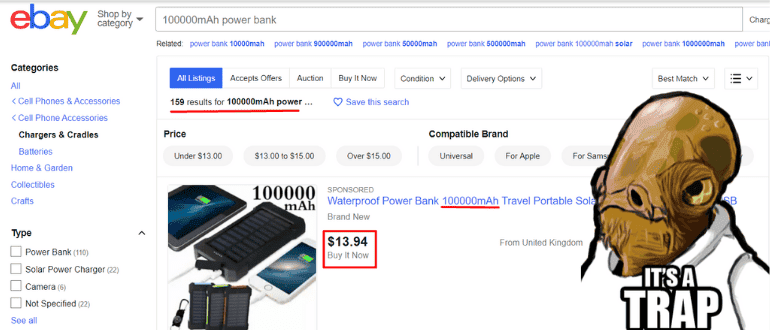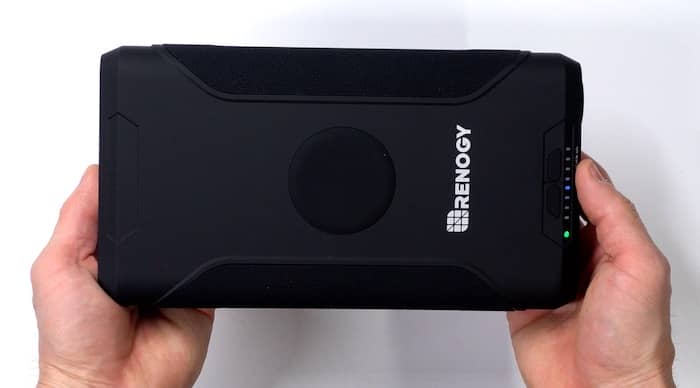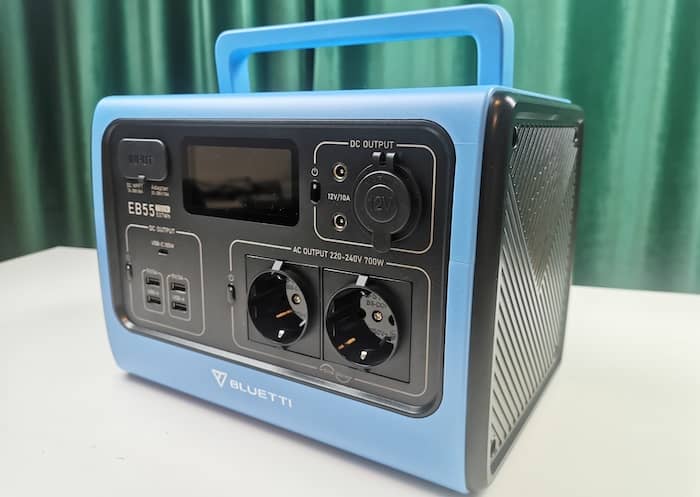Do 100000mAh Power Banks Actually Exist?
Power banks have started to gain in popularity alongside the global rise of smartphone usage. If in the beginning, the average power bank capacity was under 10000mAh, nowadays the average capacity is getting close to 20000mAh. The high-capacity models nowadays support anywhere between 30000Ah and 70000mAh. So as technology grows, so does the overall capacity offered by power bank producers.
However, it seems that the demand for mAh is growing faster than the technical capacity of packing power into portable chargers. Right now, there is an increasing demand for 100000mAh power banks, but unfortunately, there are not many products that can offer this capacity…if any!
In fact, there’s actually a worrying trend of power banks with fake 100000mAh capacities appearing in popular marketplaces.
Scams Involving Power Banks Advertised at 100000mAh
Browsing well-known e-commerce sites such as Amazon and eBay, you can easily find a bunch of 10000mAh portable chargers for sale. Moreover, they seem to be suspiciously cheap as well. As in most cases, if something is too good to be true, it probably isn’t.
Here are some examples:
The FastSun New 100000mAh Dual USB Portable Solar Battery Charger from Amazon (*not available anymore). At under $20 it’s even cheaper than many 10000mAh power banks. This should be the first alarm bell for any would-be buyer.
But a quick scroll in the review section, you can notice a bunch of 1-2 star review all complaining about the fact that the stated capacity is not real. Some reviewers estimate that it’s 10 times smaller, around 10000mAh, which actually makes more sense given the price tag.
On eBay, we have a similar situation. A quick search after “100000mAh power bank” brings back a whole list of products with suspiciously low price tags:

It’s safe to say that all these products are simply fakes, fooling people out of their money. And unfortunately, it’s pretty disappointing to see highly trusted sites such as Amazon or eBay accepting these obvious fakes on their marketplaces. Uneducated buyers, who trust these brands will be in for a big surprise if they order any of these portable chargers.
How Much Should an Actual 100000mAh Power Bank Cost?
Ok, so now that we know that paying $20 for such a device is definitely a scam, what would be the correct price we should expect to pay?
One of the largest capacity power banks available today is the Renogy 72000mAh Laptop Power Bank.

- Capacity: 72000 mAh / 266 Wh
- Dimensions: 9” x 4.9” x 1.7”
- Weight: 52.8 oz/1496 g
- Ports: 1 USB Type-A, 2 USB Type C, 1 DC, 1 car lighter
- Charging Time: 4 Hours
- Price: ~$200 (actual price might vary)
- mAh/$ ratio: 361
Or buy on DrPrepare.com or on Newegg.com
Read more about the Renogy 72000mAh
As you can see, the price of this 72000mAh power bank is just about $160. So it’s safe to say that any 100000mAh portable charger would cost upwards of $200. Anything under that should be regarded as a red flag.
Alternative: Portable Electric Generators
Now, although there currently aren’t any classic power banks with 100000mAh capacities, you could find electric power generators with equal or greater capacities. These devices are usually much heavier and bulkier than a regular power bank, they serve more purposes and they also cost significantly more. But if you do need a lot of mAh, then these are definitely a solution to consider.

- Compatible with most CPAP machines
- Capacity: 145135mAh/537Wh
- Supports wireless charging
- Can power 13 devices simultaneously
- Weight: 16.5 pounds
Or buy on BluettiPower.com or on BluettiPower.eu
The Bluetti EB-55 has a capacity of 145135mAh and is a beast of a device that can keep you powered up for days or even weeks. But it comes at a premium price. Depending on your actual needs and budget this device might be the right one for you.
Read more about the Bluetti EB55 537Wh.
A Word on Real Battery Capacity
Although we discussed this subject previously, I’d like to quickly state that the advertised capacity of even the most trustworthy power bank producer, is actually smaller in reality. On average power banks have 80% of actual capacity due to power losses and inefficiencies in the battery itself and in the charging process.
So for example, the Anker Powerhouse mentioned above, although listed at 108000mAh, in reality, can deliver less than that. Although this is a general practice in this market, some users consider this approach to be misleading. As always, the truth is somewhere in the middle, as some factors that affect capacity loss are out of the control of the manufacturers. Nonetheless, an 80% efficiency does not even compare with the 10% efficiency of the scam products presented earlier in the article.
So if you want to get a device that has a real capacity of 100000mAh, then you should buy one with an advertised capacity of at least 1250000mAh.
What Does the Future Hold?
As battery technology evolves we’ll start to see power banks with ever-increasing capacities. Here are some promising new developments that might help us see the first 100000mAh power banks:
- Graphene. A wonder material, which is basically a one-atom-thick layer of carbon. Batteries based on graphene technology are slimmer, faster, and have a higher capacity. Just in terms of capacity graphene batteries store 1000Wh per kilogram, compared to the only 180Wh per kilogram stored by classic Li-Ion batteries. Some power banks are already starting to implement graphene technology.
- Gallium Nitrate (GaN). Another emerging technology, GaN promises to deliver smaller, faster, and more efficient devices. Right now, it’s found applicability in wall chargers, but leading companies are trying to find ways to include it in portable battery chargers as well. This means smaller, faster power banks that will have higher capacities than currently possible.
- Glass batteries. This technology is the most promising but it’s also the furthest away in the future. Still, under development, glass batteries are rumored to hold 3 times the capacity of current Li-Ion counterparts and last double the charging cycles.
So it seems that there are multiple developing technologies that could have a great impact on batteries in general, and power banks in particular. As these technologies become mainstream, we should expect portable charger prices to gradually drop and the overall capacity to increase. Thus, it’s safe to assume that in a few years’ time, 100000mAh power banks will be quite as common as the 10000mAh options we have nowadays.
However, what’s less likely to change is the 100Wh limit imposed by the TSA for the capacity of batteries that are allowed on board airplanes. So unless the new technologies work in a completely different manner, the max capacity allowed on planes will still be around 26000-27000mAh. From this point of view, 100000mAh power banks would not be flight-worthy anytime soon.
